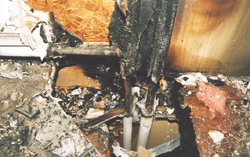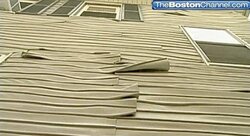it's a shame there still hasn't been any definitive or real world research on this (observing matchsticks and small chunks of wood hardly replicates a stud in the wall). I was reading another thread on here of the same subject and someone had linked to a paper on low temp pyrophoric ignition which claimed AN incident of supposedly viable ignition from long term 170 degree exposure (though the photographic proof after the fire looked to me as though the hot water pipe went through OSB, which is likely more glue than it is wood). There are just so many variables, such as humidity of a location, are there compounds on or in the wood that might vary it's ignition point, surface contaminants that might easily ignite (dust, pet hair, etc, remember those tricks for stating campfires? and we certainly know how dust can build up in choke spots where there is a convective flow) just as three different variables.
But think about this, have you ever taken the IR gun outdoors on a summer day and taken a reading on the side of your home or other objects? You'd be surprised at how hot something can get in the sun (a black roof can easily get to 160-195 degrees), yet how many houses do we notice spontaneously combusting in the summer? Are there laws against painting houses dark colours due to safety concerns (yet even the 10 degree difference between yellow and white are enough to have the school bus industry rethink what colour to paint a school bus roof these days)
So unfortunately it all comes down to, nobody really knows, do your best to avoid it, don't tempt fate and if it worries you, take some steps that will help radiate some of the heat elsewhere for your own peace of mind as it can only improve the situation (and in your case where it's just a specific area, maybe full fledged wall protection isn't necessary and you could get away with a strip of decorative stamped metal or grill, maybe some metal artsy piece that could radiate it away from the spot, an eco fan sitting on the corner that could direct just enough heat in another direction, perhaps even a mirror or mirrored finished stainless steel or some hanging decorative metal tiles could bounce back enough of the radiated heat to satisfy the concern. But if it's full scale wall protection that would make you feel better, that's what you should do rather than to rely upon a polling of opinion.)





